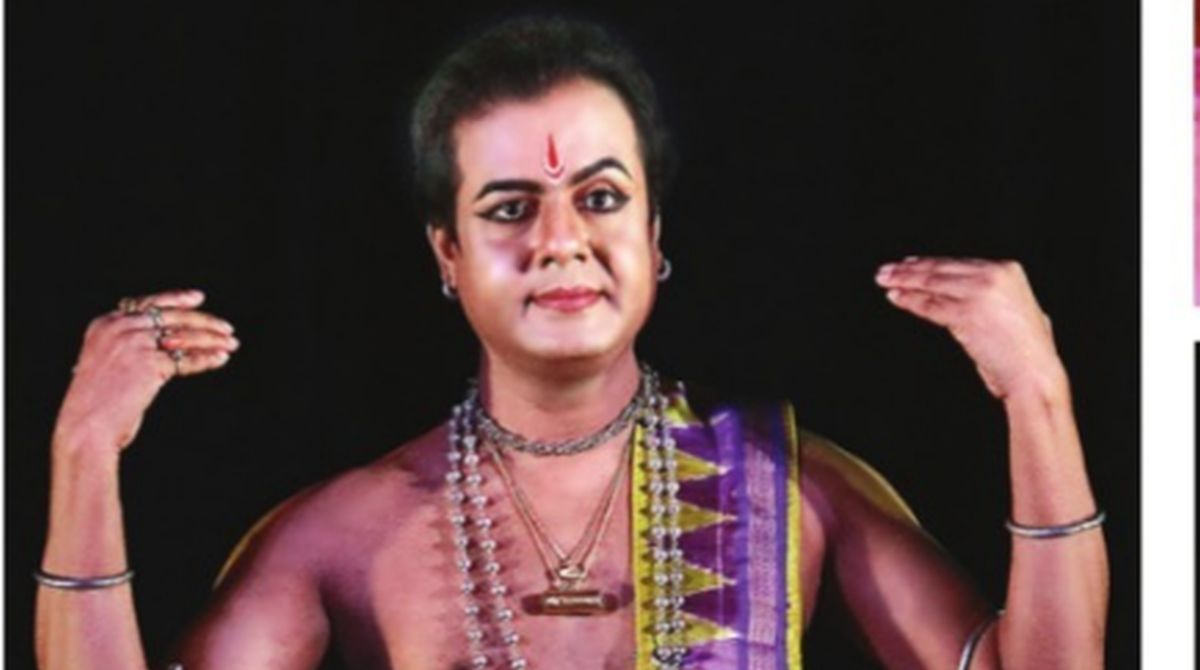Interpreting tradition anew
The two-day Guru Kelucharan Mohapatra Award Festival showcased impeccably rich performances.

It was a happy collection of dancers that had gathered to showcase the timelessness of Guru Kelucharan Mohapatra’s choreographic works. Inimitable choreographic works of the senior guru along with that of his son’s marked the occasion. Kolkata-based Odissi dancers’ bonding with the much revered guru has made the knot tighter with his son Guru Ratikanta Mohapatra being in their midst often.
Besides choreographing many of the pieces, he was a performer that evening. He related Sabari Kathain the language of Odissi dance. The emotion-filled story of Sabari suited him. One does not expect to see a senior performer at his nritta best as it is left for younger artists to show their skill in pure dance.
Having matured from innocence to experience, Ratikanta was best equipped to portray the emotions of Sabari, whose long wait for her desired Lord Rama was fulfilled only when she was bent with age. And yet she had a young mind trapped in her aged body and like a young maiden who revels in the presence of her lord, she revelled at her good fortune on seeing Rama.
Advertisement
She ushered him into her hut, honoured and worshipped him and fed him with the juiciest of berries after checking its sweetness by first having a bite herself, caressed him and demonstrated her love with Rama looking at her obligingly and indulgently. All of these required a mature and thinking artist, which Ratikant has imbibed from his “Baba”. Having set such high standards, he inspired his disciples to present their pieces.
There was Rajib Bhattacharya and his group performing a Mangalacharan —a benedictory verse in praise of the Goddess, who is endowed with every divine glory and one who playfully holds the veena, vividly described by the lyricist in the sweet language of Sanskrit. It was a gem of a creation rendered with a balanced treatment of the different nuances of Odissi dance. Rajneeta Mehra and her group of Chhanda Manjari significantly performed a .
They ended with a grand finale performing the Shiva Panchamukhacompositions of Raghunath Panigrahi. Both of her pieces were choreographed by Guru Ratikanta Mohapatra. Possessed with good stage presence and an hour-glass figure, Mehra performed alongside a competent group of dancers. She etched out kaleidoscopic and eye catching designs, which stood out for the nuanced dancing. Keerwani Pallavi, which is a choreographic marvel of the senior guru, was taken up by Shayomita Dasgupta.
As a word of caution to Dasgupta , who is potentially a good performer, this reviewer would like her not to give her practices a slip, if she has to remain fit. It is common knowledge that if you give your practice eve one miss, your guru notices it, with two the audience comes to know and with more, you are irredeemable. It was pleasurable to see Arnab Bandyopaddhay’s piece, Nachonti rangey Sri Hari.
The iconic figure of Hari or Krishna is always seen in the tribhanga poses, even when he is playing the flute. This three part break of the body is to be seen in almost all of the figures of Hari. The flautist’s pose in this particular bhanga is sensuous and the gopis and Radha make a beeline for him. Philosophy has innumerable number of explanations for this but Arnab Bandopadhyay was an epitome of Shree Hari, especially with his impish smile, as he danced using the syntax of the genre with the audience savouring it all.
The joyful dance of Shree Krishna could not be ignored. He made a sweet statement about the lovable prankster. Dashavatar in raga Mohana and taal Jhampais a memorable creation of Guru Kelucharan Mohapatra. This reviewer had the rare opportunity of seeing it a long time ago at Rabindra Bharati University. It was a jaw dropping experience, where connoisseurs, dance aspirants and laypersons thronged in large numbers, craning their necks to see the performance.
Students of Sankalpa under the leadership of Subikash Mukherjee showcased it and did quite a good job. Mohona Pallavi, a composition of the legendary duo Kelucharan Mohapatra and Bhubaneswar Misra, was performed under the direction of Urmila Bhowmick. On the other hand, Diksha Manjari performed Ardhanariswara in raga Malikaand taal Malikato the music composition of Pandit Bhubaneswar Misra and dance choreography by Guru Kelucharan Mohapatra.
The President of Odissi forum Sudeep Srimal and secretary Arundhati Roy inaugurated the two-day festival. The special guests present were Guru Aruna Mohanty and Odissi dancer of repute, mime artist and teacher, Niranjan Goswami; Thakur Sri Samireswar of Biswa Seva Sangha; SK Mqbul Islam, associate professor of St Paul’s Cathedral Mission College, and Priti Patel, Manipuri dancer and artistic director of Anjika
Advertisement